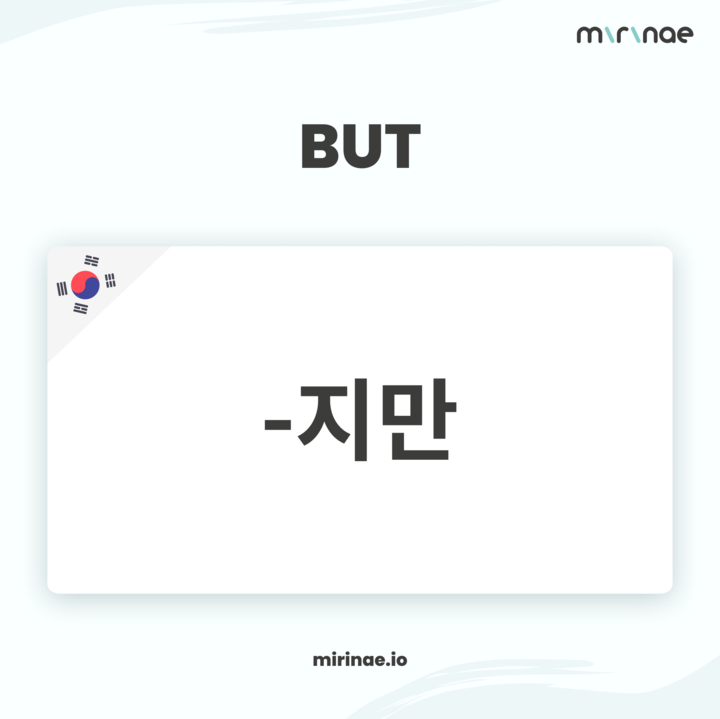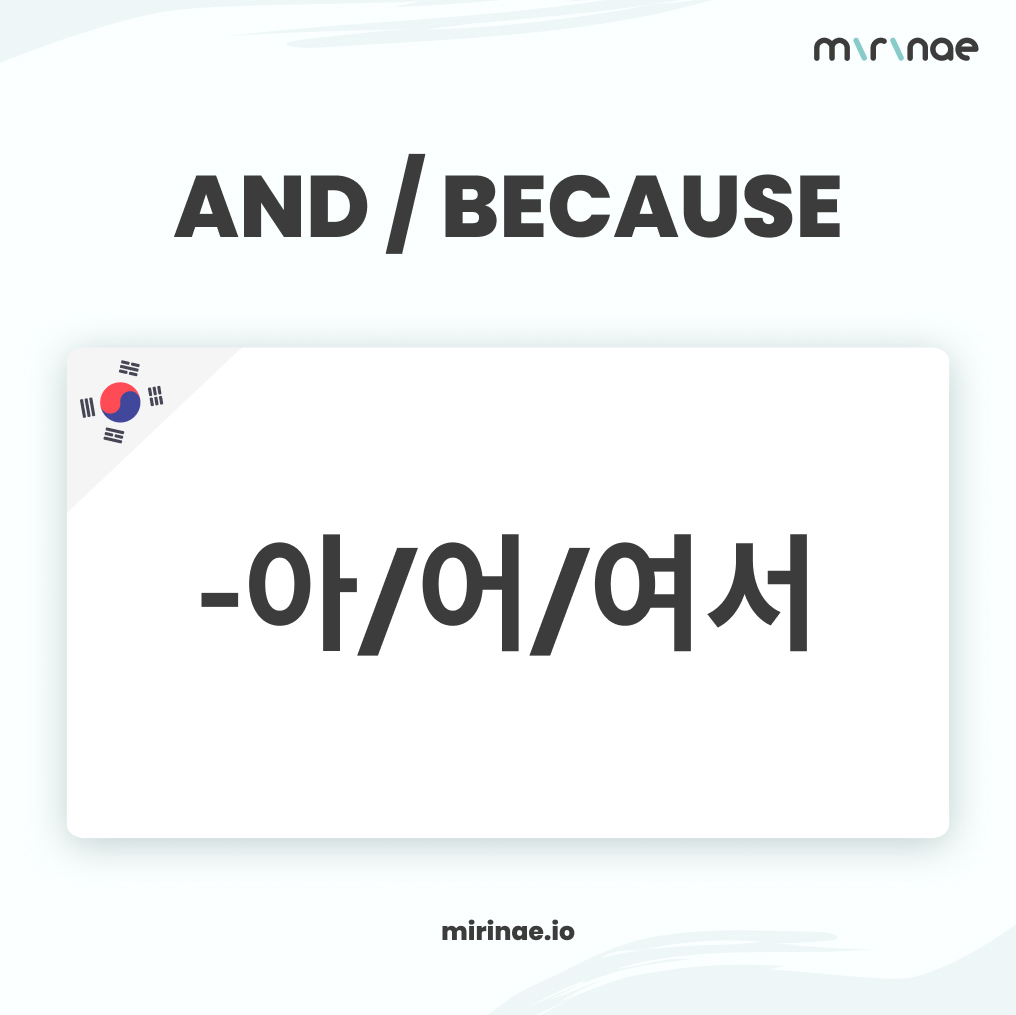[Grammar] #17 -(으)ㄴ 후에

[Grammar] #17 -(으)ㄴ 후에 Mirinae May 31, 2024 after doing -(으)ㄴ 후에 means “after doing” and is attached to an action verb, indicating the following clause happens after the action in the preceding clause. dialogue A: 한국어를 배운 후에 뭐 하고 싶어요? What do you want to do after learning Korean? B: 졸업한 후에 […]
[Grammar] #16 -기 전에

[Grammar] #16 -기 전에 Mirinae May 31, 2024 before doing -기 전에 is used to indicate that the action in the following clause occurs before the action in the preceding clause. dialogue A: 이제 운동을 시작할까요? Shall we start working out now? B: 운동하기 전에 먼저 스트레칭을 해야 해요. You should stretch before working […]
[Grammar] #15 -지만

[Grammar] #15 -지만 Mirinae May 31, 2024 but -지만 shows that one accepts the contents before this pattern as true but indicates that something contrary or different is in the following clause. dialogue A: 점심 메뉴로 떡볶이 어때요? How about tteokbokki for lunch? B: 좋아요. 떡볶이는 조금 맵지만 맛있어요. Good. Tteokbokki is a bit […]
[Grammar] #14 -아/어/여서

[Grammar] #14 -아/어/여서 Mirinae May 31, 2024 in order to -아서/어서/여서 shows a time ordering or a reason. indicating the events happened in sequence indicating the preceding clause is a reason or cause for the following dialogue A: 어제 오후에 뭐 했어요? What did you do yesterday afternoon? B: 친구를 만나서 같이 쇼핑을 했어요. […]

